The Canary in the Coal Mine
Southern Steelhead Endangered Species Status

By Sandra Jacobson, Ph.D., CalTrout South Coast Regional Director
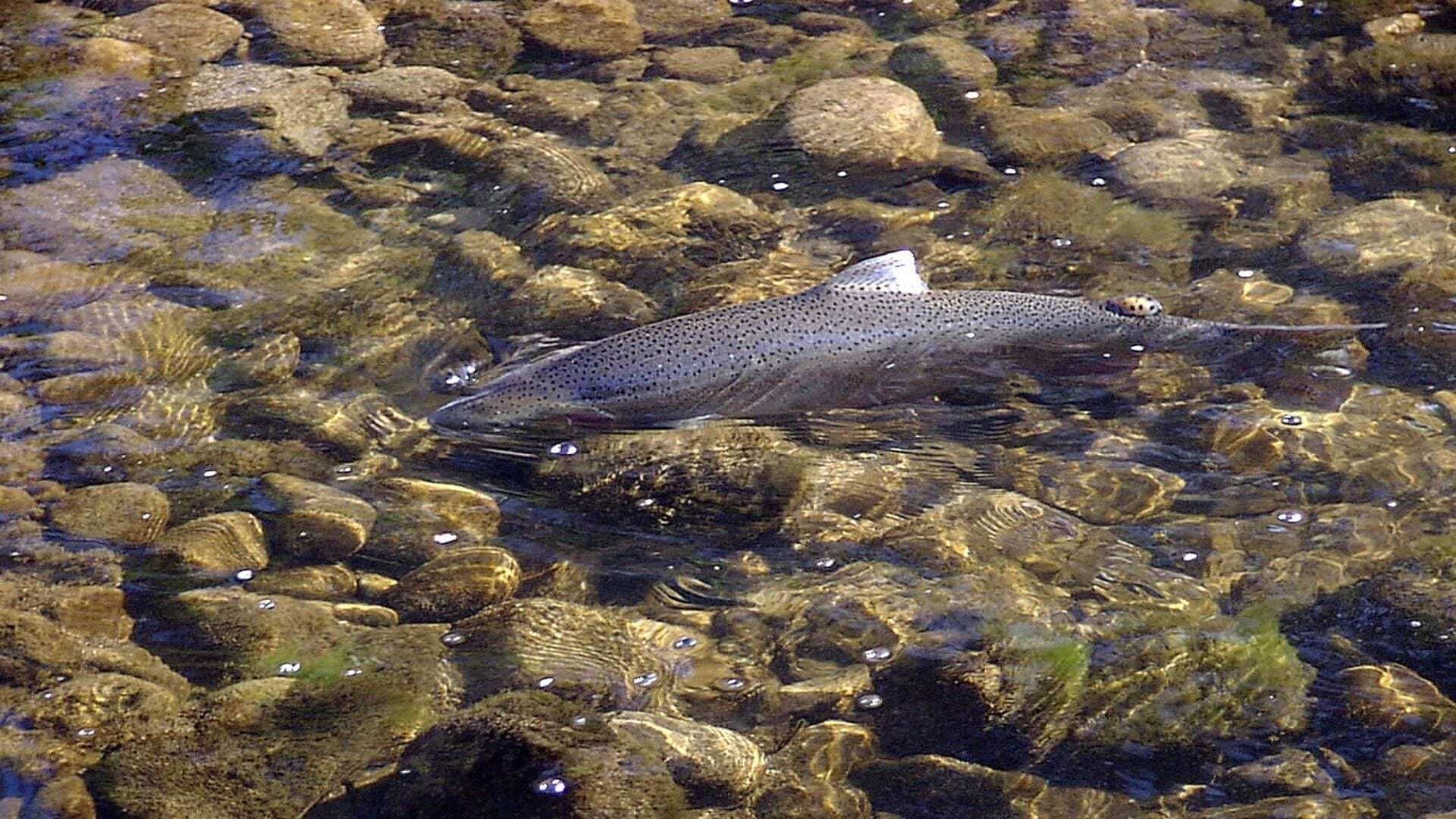
“In the 10,000-year history of the southern steelhead trout, Aug. 11, 1997, was particularly noteworthy. On this day, the fish was listed as an endangered species by the National Marine Fisheries Service (NMFS).”
Steve Hymon thus framed his LA Times interview with CalTrout Executive Director Jim Edmondson in 1998. Answering the question of why people should care, Edmondson described steelhead as among the “most cost-beneficial and biologically important indicator species of the health of that watershed. They are the canary in the coal mine. Anything that happens in that watershed, ultimately gets in the creek. The steelhead needs to live in the creek, the lagoon and the ocean to fulfill its life cycle. It’s hard to imagine another species that provides that kind of barometer.”
The Endangered Species Act (ESA) listing of Southern California steelhead followed the recognition of plummeting steelhead populations – particularly in Southern California where runs of tens of thousands were disappearing. The Steelhead Restoration and Management Plan for California (1996) was drafted by California Department of Fish and Game (now CDFW), urged by biologists and fishing groups such as CalTrout and Trout Unlimited, and mandated by the Salmon, Steelhead Trout and Anadromous Fisheries Program Act of 1988 (SB2261). This legislation was intended to increase the natural production of salmon and steelhead by the end of the century.
However, things were headed in the wrong direction, despite work in the field and efforts of advocacy groups such as the California Advisory Committee on Salmon & Steelhead Trout (CAC). Tom Weseloh, CalTrout North Coast Director at the time, actively participated; and the tradition continues today with Darren Mierau, current CalTrout North Coast Director, serving as chair of the CAC.
One of the key issues on the table—highlighted in the CalTrout and UC Davis Report, SOS II: Fish in Hot Water—is that on our current trajectory, it’s predicted that 45% of native California salmonids will face extinction in the next 50 years.

Upper Ventura River, circa 1920

Adult steelhead stranded in lower Santa Ynez River due to low flows, 1946.
When a species faces imminent extinction – there is a sense of urgency to act, but recovery programs differ depending on the species. Because steelhead, the ocean-going form of Oncorhynchus mykiss, use many areas of a watershed from ocean to headwaters, there are a range of threats to address and many stakeholder interests to balance. Making things more complex, Southern steelhead recovery takes place in the middle of 20 million people – so a pragmatic approach is essential. Even considering an ESA success story like de-listing the bald eagle, in which a main cause was identified and mitigated by banning DDT, there remains a web of threats to habitat and individuals. What follows is a bird’s eye view of Southern California steelhead recovery – a decades long process whose prospects of success are increasing despite the odds. CalTrout is proud to be part of this heritage that has depended on the actions of capable people with the right skill sets at the right time, and the vision to move this forward.
ESA Listing Area
The listing of the Southern California steelhead in 1997 under the Endangered Species Act (62 FR 43937) covered steelhead in anadromous water below natural and man-made fish passage barriers within the Southern California Evolutionary Significant Unit (ESU). This ESU is bounded by the Santa Maria River near Santa Barbara at the northern end, to Malibu Creek in the Santa Monica Mountains at the southern end.
A key feature of this ESA listing was that O. mykiss present above total barriers, known as resident rainbow trout, were not listed as endangered. This provides recreation for anglers in backcountry streams, as well as stocked reservoirs near urban areas. These inland trout are under the jurisdiction of U.S. Fish and Wildlife Service rather than NMFS and although not covered, are key to steelhead recovery due to their genetic lineage and adaptive evolution.
After documentation of O. mykiss/steelhead in San Mateo Creek in San Diego County by California Department of Fish and Wildlife (CDFW) biologists in 1999-2001, and genetic analysis showing native steelhead ancestry, the ESA listing was extended south to the U.S.-Mexico border in 2002 (67 FR 21586).
Developing a Recovery Plan
The National Marine Fisheries Service brought together panels of experts in the early 2000s, led by David Boughton, to provide a rigorous scientific basis—published as Technical Memos—to inform the recovery plan. The resulting NMFS Southern California Steelhead Recovery Plan (2012) describes goals and strategies for augmenting steelhead populations within the Southern California Distinct Population Segment (DPS). It outlines recovery objectives and designates high priority watersheds to “prevent the extinction of Southern California steelhead in the wild and ensure the long-term persistence of viable, self-sustaining, harvestable, interacting wild populations of steelhead distributed across the DPS.”
Watersheds with the best chance of supporting recovery were identified, with the severity of threats visualized by a heat map. A catalog of recovery actions was then generated for the major watersheds, and prioritized to remediate these threats and thereby promote steelhead recovery.
The Recovery Plan is a guidance document, not a regulatory document. Successful implementation of the more complex or large-scale steelhead recovery projects may benefit from a state listing, as well.
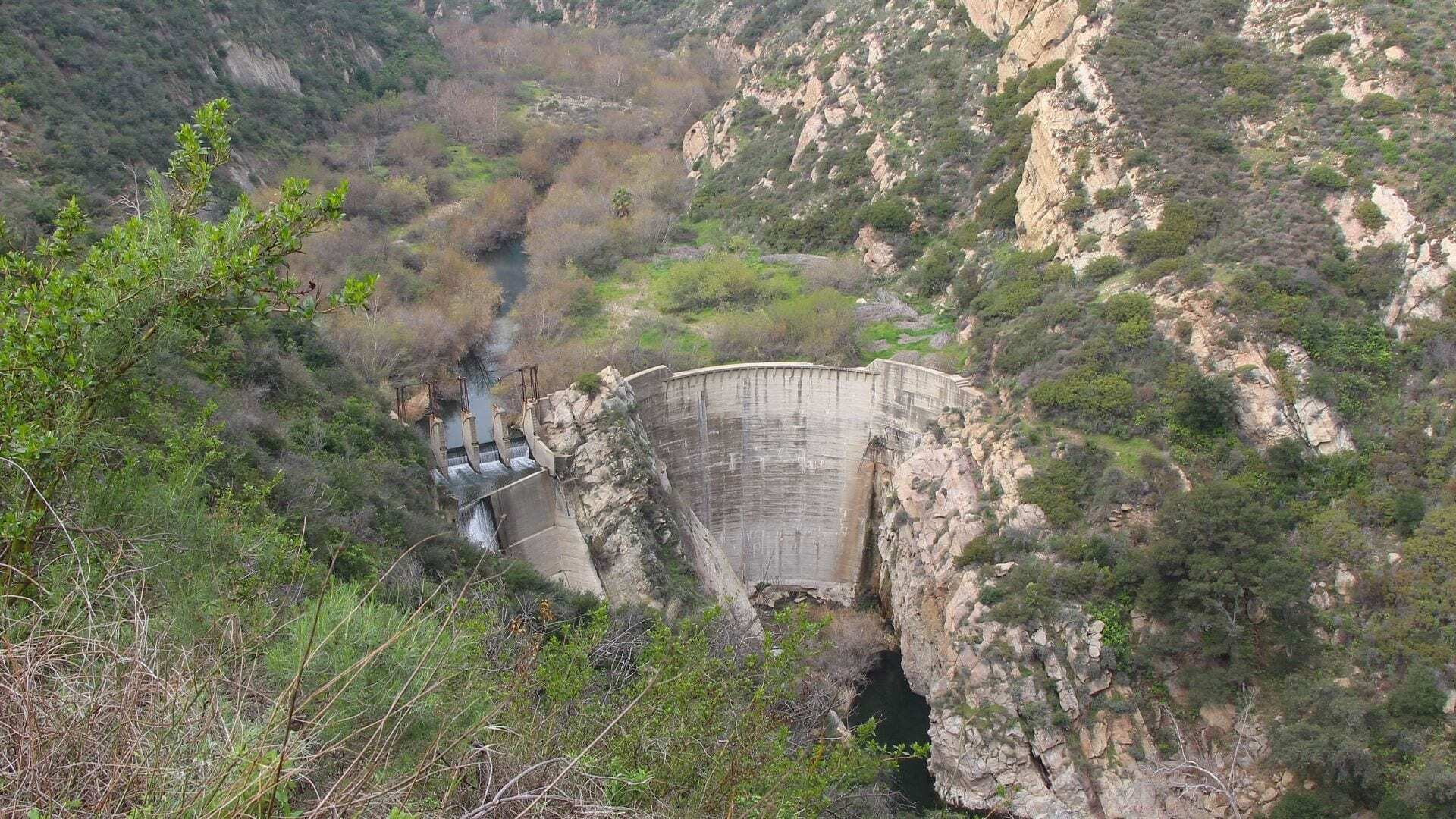
Implementing the Recovery Plan
Steelhead recovery efforts are underway throughout Southern California to mitigate threats to steelhead, such as fish passage barriers, invasive species, dewatered streams, poor water quality, habitat degradation, estuary contraction, agricultural impacts and wildfire. Funding comes from federal and state accounts, state bonds, foundations, and donations – mostly in the form of grants or other agreements.
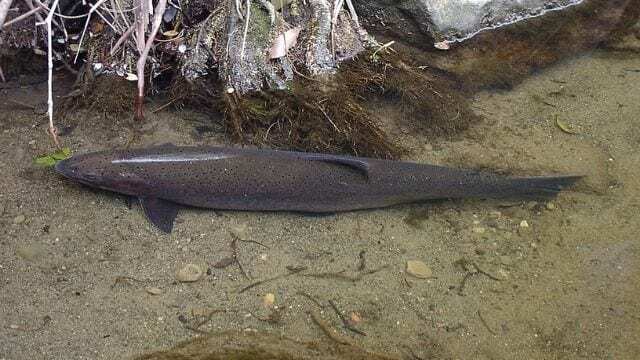
steelhead spotted on Mission Creek
At the northern end, there are numerous examples of recovery plan implementation. South Coast Habitat Restoration is systematically replacing undersized culverts and other barriers in Santa Barbara area streams with full-span bridges. The City of Santa Barbara constructed a novel fish passage solution within a concrete channel in Mission Creek. Los Padres National Forest is replacing concrete ford barriers in the Sisquoc River, and Coastal Ranches Conservancy is improving fish passage in the Gaviota Creek watershed. Cachuma Operations Board, who operates Bradbury Dam and downstream water operations on the Santa Ynez River, has improved conditions for steelhead after the dam caused a 99 percent decline in steelhead runs over 70 years. CalTrout has pursued legal pathways over the past decade to increase water supply reliability, in-stream flow, steelhead monitoring and habitat quality for steelhead in the Santa Ynez River, which used to host one of the largest steelhead runs in the south coast.
Caltrans , which provides fish passage solutions on state routes, most recently replaced a bridge damaged by the Montecito debris flow with a full span bridge in Santa Barbara County.
Further south along the coast, the Resource Conservation District of the Santa Monica Mountains has provided the most comprehensive monitoring and steelhead habitat assessment data for steelhead at the southern end of their range. Rosi Dagit, Sr. Scientist for RCDSMM, and her team have provided 15 years of data in Topanga Creek and Malibu Creek on steelhead abundance, genetic testing results, habitat improvement and invasive species removal.
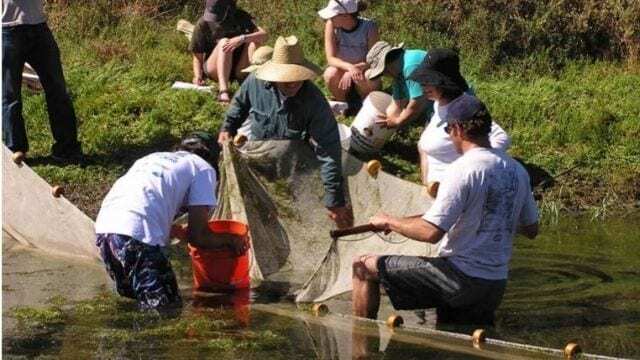
Malibu Lagoon Fish Survey 2005
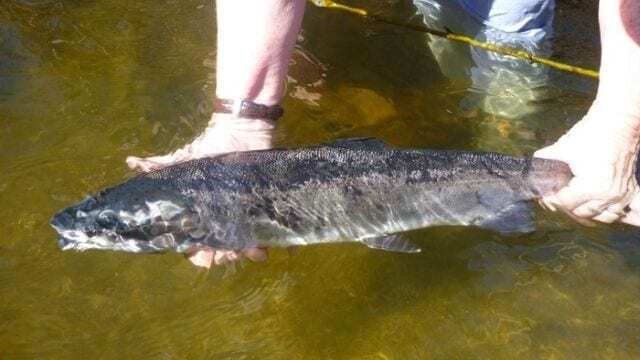
Last remaining steelhead in Malibu Creek died March 2017
Topanga Lagoon is also in restoration design phase to benefit steelhead and other native species.
The California Department of Parks and Recreation (CDPR) led restoration of the Malibu Lagoon over a decade ago and is spear-heading removal planning of Rindge Dam on Malibu Creek. CalTrout collaborates with CDPR on this project, and supports removal of this dam and Matilija Dam on the Ventura River through our Dams Out Initiative. This year, the Rindge Dam removal project is taking a leap forward into design phase with completion of the U.S. Army Corps of Engineers’ Malibu Creek Ecosystem Restoration Feasibility Study. Congress commissioned the study in 1992, and is slated to approve the project this year.
Success Through Coalitions
CalTrout leads two steelhead recovery coalitions funded by CDFW, one based in Ventura (led by Russell Marlow) for the Santa Clara and Ventura Rivers, and one in San Diego (led by myself) for the four high priority rivers San Juan Creek, San Mateo Creek, Santa Margarita River and San Luis Rey in San Diego and Orange counties.
These Coalitions in the South Coast Region engage more than 40 federal, state, and regional governmental entities, tribal nations, and conservation groups who bring technical and operational expertise to implement over 20 steelhead recovery projects. Coalition projects include invasive Arundo removal in the lower Santa Clara River by the Santa Clara River Conservancy; steelhead passage on Camp Pendleton; native rainbow trout protection at Coldwater Canyon Creek and WF San Luis Rey, irrigation efficiency and trout habitat protection in the San Luis Rey led by San Luis Rey Watershed Council, and projects led by CalTrout including ecosystem enhancement at Rose Valley Lakes near Sespe Creek, large scale fish passage remediation at Harvey Diversion in Santa Paula Creek, the I-5 Metrolink fish passage barriers in Trabuco Creek, and Sandia Creek Drive bridge replacement in the Santa Margarita River; non-native removal in San Mateo Creek and Santa Margarita River; and removal of over 80 check dams led by the Cleveland National Forest in upper San Juan Creek and Santa Ana watershed.
NMFS and CDFW are at the forefront of Southern steelhead recovery. NMFS oversees steelhead recovery through policy, scientific and regulatory pathways. NMFS staff, led by Steelhead Recovery Coordinator Mark Capelli, facilitates scientific collaborations and presentations, submits letters to protect steelhead interests such as for Groundwater Sustainability Plans, writes 5-year status updates, and supports regional groups who implement the Recovery Plan.
The NMFS Long Beach regulatory office provides guidance during project development and writes Biological Opinions that define steelhead protective measures on major projects.
CDFW is an essential partner in Southern steelhead recovery and they touch virtually every aspect of the process. CDFW staff, led by South Coast Sr. Scientist Supervisor Mary Larson, oversees the steelhead recovery program, provides programmatic support for these projects, performs steelhead monitoring, and works with state and federal agencies to move projects forward when they hit inevitable roadblocks but also new opportunities. One of the issues gaining traction is planning for native rainbow trout relocation after catastrophic wildfires, such that these populations and their genetics can be preserved.
Along with CDFW and NOAA, State Coastal Conservancy, Wildlife Conservation Board, National Fish and Wildlife Foundation, and U.S. Fish and Wildlife Service (to name a few) are actively funding steelhead recovery projects in the South Coast. Projects are enhanced by the streamlined permitting contributed by Sustainable Conservation and others.
 High Priority Highlight: Santa Clara River
High Priority Highlight: Santa Clara River
The Santa Clara River in Ventura County was once a major stronghold for Southern steelhead. Runs of greater than 10,000 steelhead prior to 1940 are now sparse. The first major barrier encountered is the Vern Freeman Diversion at 12 miles inland on the mainstem. To restore effective fish passage at this site and compel United Water to comply with NMFS’ Biological Opinion, sequential lawsuits were filed by CalTrout (2008) and then by Wishtoyo Foundation and Center for Biological Diversity (2016). After many years, there is now a timeline to comply with the latest Court Order to replace this structure with one that will restore passage to upper Santa Clara River and tributaries, meet in-stream flow requirements, and a Habitat Conservation Plan to ensure protection for the future.
High Priority Highlight: Trabuco Creek
Trabuco Creek, the major tributary to San Juan Creek in Orange County is another high priority watershed for steelhead recovery. The two barriers at Metrolink railroad bridge and the I-5 bridge array are total fish passage barriers. Remediation of these barriers will restore access to over 15 miles of steelhead spawning and rearing habitat.
The fish passage solution design for the I-5 site is a fishway with a pool and chute configuration, transitioning into a fish transport channel cut into the concrete flood control channel running beneath the bridges. The engineering team of NHC, Mike Love & Assoc, Gannett Fleming, and Stillwater Sciences bring years of experience in hydrologic, hydraulic, geomorphic, geotechnical, civil and structural engineering to this challenge. The hydraulic functionality of the structure has been demonstrated in a large-scale physical model. CalTrout is leading the final design phase, building on Trout Unlimited work in earlier phases, to achieve fish passage through the heart of San Juan Capistrano
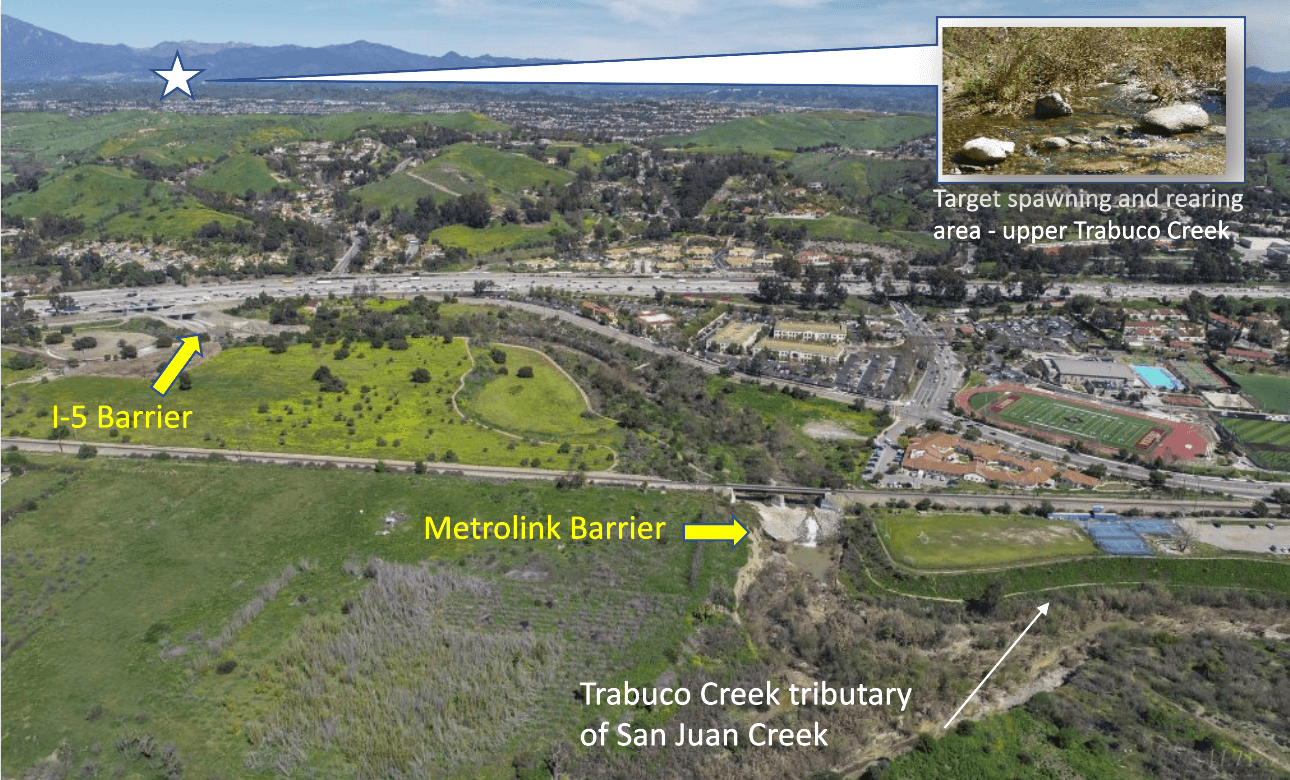
In the more than two decades since the Southern California steelhead was given protection under the Endangered Species Act, I am encouraged by where we are today. In 2018, I wrote an OpEd for the LA Times sharing progress made in recovering this iconic species. The number of steelhead documented by monitoring is still precariously low, but the projects that remediate the main threats are underway across the South Coast landscape, and there is reasonable expectation that these native fish can coexist with people.
The steelhead struggle is symbolic of a larger challenge we face in our state: maintaining healthy waterways for people and wildlife in urbanized coastal California.
Success is symbolic of a larger benefit: Protecting fish will ultimately restore our rivers.




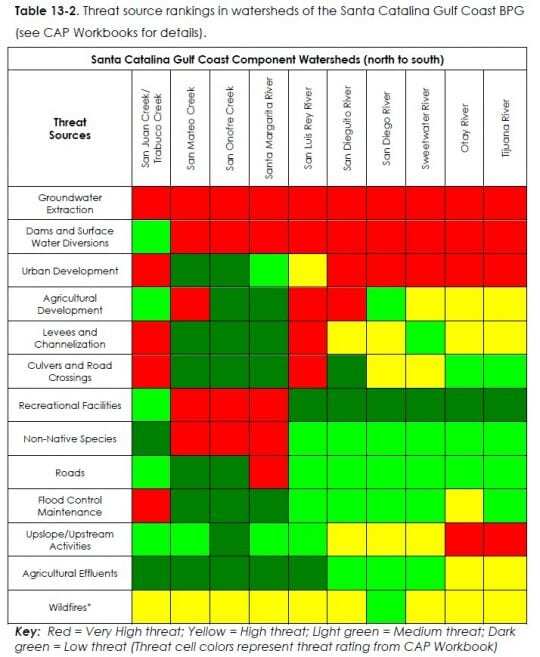
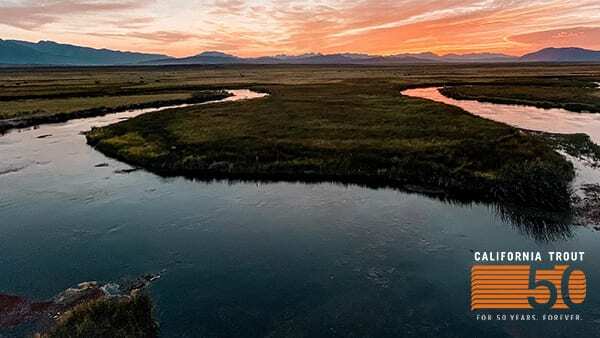
 Dams block access to historical spawning and rearing habitats. Downstream, dams alter the timing, frequency, duration, magnitude, and rate of change of flows decreasing habitat quality and survival.
Dams block access to historical spawning and rearing habitats. Downstream, dams alter the timing, frequency, duration, magnitude, and rate of change of flows decreasing habitat quality and survival.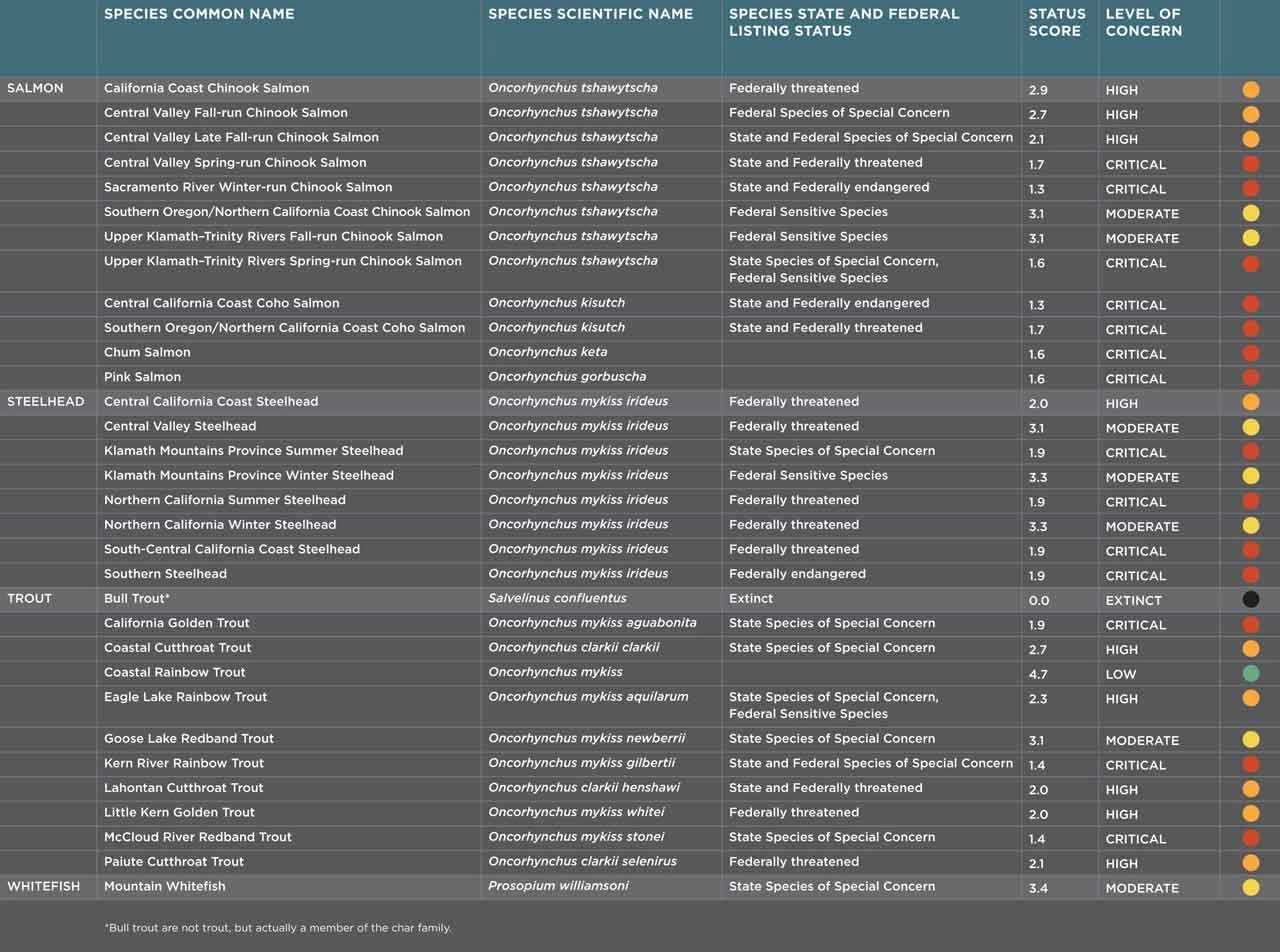
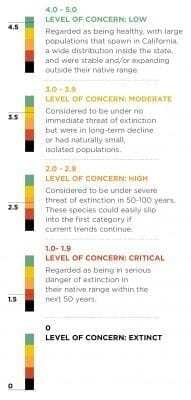

 Human use of streams, lakes, and surrounding watersheds for recreation has greatly increased with population expansion. Boating, swimming, angling, off-road vehicles, ski resorts, golf courses and other activities or land uses can negatively impact salmonid populations and their habitats. The impacts are generally minor; however, concentration of multiple activities in one region or time of year may have cumulative impacts.
Human use of streams, lakes, and surrounding watersheds for recreation has greatly increased with population expansion. Boating, swimming, angling, off-road vehicles, ski resorts, golf courses and other activities or land uses can negatively impact salmonid populations and their habitats. The impacts are generally minor; however, concentration of multiple activities in one region or time of year may have cumulative impacts.













